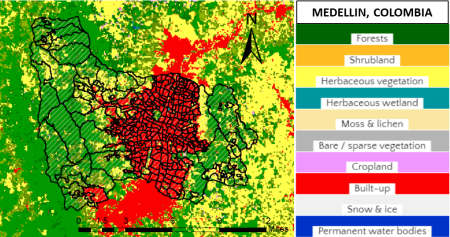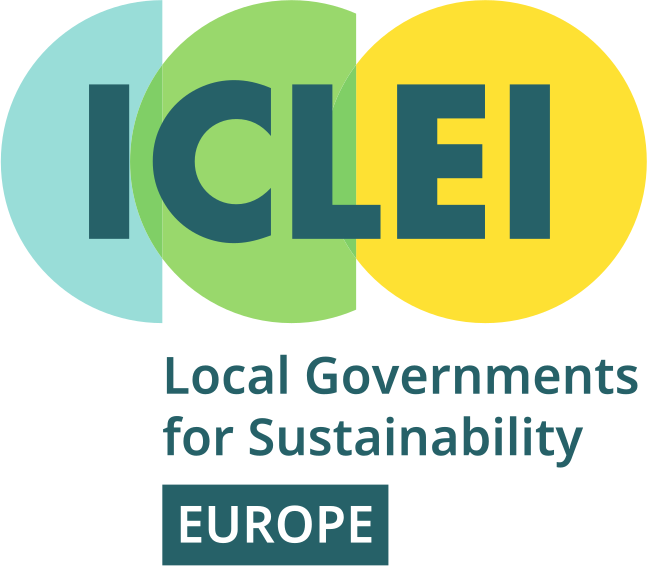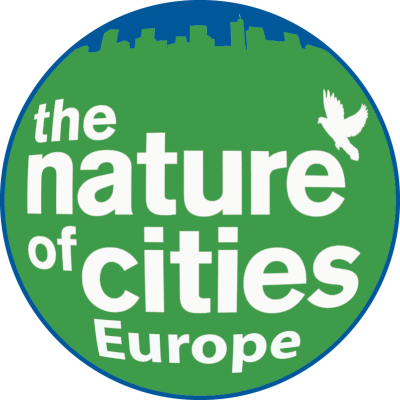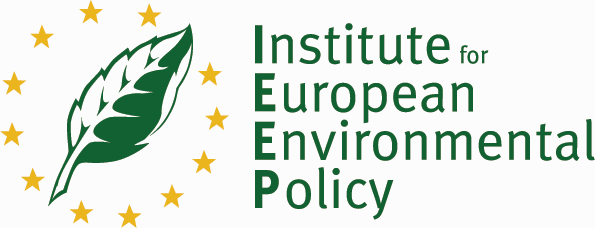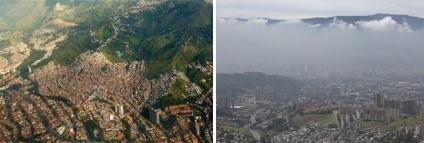
Area characterisation:
As with other Latin American cities, Colombian urban areas are characterised by the presence of numerous self-produced settlements, called informal or popular settlements. In this type of urban area some of the needs are met through self-help and self-management mechanisms created by the local communities and access to the city’s goods and services is limited creating serious spatial, environmental and social inequalities. In addition, informal settlements are often characterised by critical overcrowding and precarious housing conditions (in relation to their physical structure and surroundings), absence of some public services and, in many cases, illegal tenure. Medellín and its metropolitan area, is a good example of this informal urban sprawl, which has deepened as a result of increasing migration from the countryside to the city as a result of violent events in the country, and industrialisation processes in the Aburrá Valley region.
Despite efforts of the local governments and the private sector to meet the housing demand (some suggest this is due to a lack of political will and top down action in order to perpetuate their hegemony) a wave of displacements caused by the armed conflict meant that, by the 1960s, the informal city was home to 50% of the population. By 2011, 25% of the city’s territory expanded with neighbourhoods of varying levels of marginality. This accelerated growth, mainly to the peripheral and usually informal areas of the city, significantly reduced the citizen’s quality of life, with a drastic increase in poverty and inequality. Likewise, the occupation of risk zones such as mountain slopes is increased, and coalescence with municipalities surrounding the city also increases. This accelerated and “unplanned” urbanisation process has resulted in the loss of important parts of the region’s fertile and agricultural soils, fragmentation of urban and peri-urban ecosystems, air pollution and degradation of soils and water bodies, and consequently, a considerable decrease in the provision of ecosystem services.
Objective:
In response to the challenges arising from the urban expansion of Medellín and the close association with neighbouring municipalities, the Metropolitan Area of the Aburrá Valley (AMVA for its Spanish abbreviation) was established in 1980 as a regional public transportation and urban environmental authority. Within this context, the current city government, in co-ordination with other municipalities of the AMVA, focused its development plan (Plan de Desarrollo) priorities on the implementation of actions to improvethe urban environment, including nature-based interventions from the neighbourhood to the metropolitan scale, with the collaboration of diverse stakeholders: public institutions, private actors, civil society organisations and academic bodies. Thus, the interventions in urban green spaces that have taken place in Medellín in recent years, are one of the most notable examples of implementation of public policy to date and represent a fundamental step in urban transformation as an effective tool to over come social challenges associated with insecurity, mult-idimensional poverty and socio-spatial segregation.
Images
Potential impacts/benefits:
The most evident benefits of interventions promoted by AMVA in Medellín and its Metropolitan Area implementation are relate to:
- Maintaining Biodiversity.
- Increased quality and quantity of green and blue infrastructures.
- Improved connectivity and functionality of green and blue infrastructures.
- Greater ecological connectivity across urban regenerated sites.
- Increased amounts of green open spaces for residents.
- Increased sense of ownership and social interaction within communities.
Actions:
Considering regional (macro), urban (meso) and local (micro) scales, nature-based transformations promoted by the AMVA in recent years are made explicit in the following three examples:
Metropolitan system of protected areas - Macro scale.
The Metropolitan system of protected areas in the Aburrá Valley is a network of urban biological corridors managed to enhance the conservation of biodiversity, environmental goods and services, and socio-cultural values associated with regional ecosystems. As an environmental authority, the AMVA leads actions for the conservation of ecosystems with high ecological and cultural values, based on the engagement between institutions of Medellín and the other 9 municipalities that compose the metropolitan area. In addition to having 5 declared protected areas that contribute to improving ecological connectivity and providing habitat for diverse species, this metropolitan system is currently an important part of the citizen’s identity and core of initiatives that contribute to social cohesion and appropriation of nature, such as hiking activities, participatory science projects and research. It has also helped to reduce deficits of quality of public spaces in different areas of the city. Regarding governance, this metropolitan system is recognised in the country for engaging public and private entities, universities and research institutes, and citizens towards conservation objectives, and for achieving the integration of management actions for biodiversity conservation from an urban-regional perspective.
Parques del Río – Meso scale
In recent years, as a strategy of the Mayor’s Office and the Secretariat of Environment to recover the city's relationship with water bodies, a series of linear parks have been developed as connecting elements between eastern and western zones of the city and, in many cases, as the only public space areas in the poorest sectors of Medellín.7 These linear parks were established as public spaces to connect citizens with nature, conserve biodiversity and clean micro watersheds, providing at the same time, spaces for enjoyment and recreation, and prioritising pedestrian mobility. Parques del Río is a notable example among these parks, because it was conceived as an urban management instrument to stimulate the city’s real estate development in central areas, through quality public space generation and reducing urban expansion pressures on Medellín's peripheral areas.4 In addition, as a corridor that crosses the city, Parques del Río connects different sectors and urban actors, coming from the city's most disadvantaged areas or from the industrial neighbourhoods with higher incomes.
Cerro de Moravia - Micro scale
"Moravia Florece para la Vida" is a project recognised as an example of environmental and urban innovation. Since 1977, Cerro Moravia was used by the municipality as an open-air municipal garbage dump. Subsequently, hundreds of migrant and low income families, settled near this dump, but in 1984 the municipal administration decided to close it. After population relocation in 2012, the Secretariat of Environment started a project for the recovery of Cerro Moravia. Actions in this territory included consolidation of two productive units for community economic development and strengthening of social organisations, planting of several gardens by the community, establishment of phyto- and bio-remediation plots for soil recovery, construction and maintenance of wastewater treatment plants, support for two gardening cooperatives, among other actions that have benefited thousands of citizens.
Transferability of result:
After the urban renewal of Medellin, which prioritised green areas and public space, several of the city’s public policies and government plans turned environmental issues and biodiversity conservation into the central axis to the city and metropolitan area’s development. However, it is still not only necessary to promote research for improving space management, but also to make progress in defining a monitoring framework to enable direct correlations between urban nature and citizen wellbeing to be established. This would allow the inclusion of other urban actors, such as health of security sectors, that could represent a critical voice to promote Nature-Based Solutions. It is also necessary to strengthen financial mechanisms, for example, through mandatory and/or voluntary contributions from construction and transportation industries to ensure the projects’ sustainability.
Lessons learnt:
An implementation of Nature-Based Solutions that integrates different scales and stakeholders is essential to identify the contributions of biodiversity and ecosystem services to urban development, and for their effective incorporation in city planning. Prioritising interventions that promote social interactions and citizen re-connection with nature not only improved indicators associated with ecological processes and urban biodiversity, but also contributed to improving other social and well-being indicators, particularly in informal settlements. Furthermore, prioritising environmental education and citizen involvement in the design and management of green areas, has facilitated protected areas and infrastructure interventions such as Cerro El Volador or Parques del Río to become part of the Medellinenses (Medellin people) identity.
Organisations:
Alcaldía de Medellín: https://www.medellin.gov.co/
Área Metropolitana del Valle de Aburrá: https://www.metropol.gov.co/
Client:
Metropolitan Area of the Aburrá Valley
Design team:
Metropolitan Area of the Aburrá Valley environmental authority (AMVA for its Spanish abbreviation)
Contacts:
Global goals:
-
3. Good Health and well being
-
11. Sustainable cities and communities
-
13. Climate action
NBS goals:
- Enhancing sustainable urbanization
- Restoring ecosystems and their functions
- Urban regeneration through nature-based solutions
- Nature-based solutions for improving well-being in urban areas
NBS benefits:
- Restoring ecosystems and their functions
- Enhancing sustainable urbanisation
Publications and reports:
- Echeverri, A. & Orsini, F. (2010). Informality and Social Urban Planning in Medellin. Medio Ambiente Urbanismo y Sociedad. Hermelin, Echeverri & Giraldo Editores. Fondo Editorial, Universidad Eafit.
- Gaviria, A., Restrepo, C., Restrepo, D., López, G., Domínguez, E., Morín, E., … Pérez, H. (2014). Medellin Letter: On the Human Future of the World's Cities. Seventh World Urban Forum UN-Habitat. Mayor's Office of Medellín. Medellín: Isvimed & Complexus.
- Gómez, O., Quintanilla, O., Gallegos, A., Montoya, J., Morato, J., & Viadé, D. (2011). Moravia as an Example of Degraded Urban Areas Transformation: Appropriate Technologies for Integrated Watershed Restoration. Nova, 9 (15): 41-52.
- Herrán, C. (2012). Linear parks as a new modality of inclusive public space in Medellín. Revista S&T, 10 (22), Memorias: 5o Encuentro Internacional de Investigación en Diseño: 159-166. Revista S&T, 10 (22), Memorias: 5o Encuentro Internacional de Investigación en Diseño: 159-166
- Medellín Mayor's Office. General information about Medellín. Available in:
https://www.medellin.gov.co/irj/portal/medellin?NavigationTarget=navurl://6488ef50a6787e1fdbc4e42e62a46a67 [February 2021]
- Metropolitan Area of Aburrá Valley. Metropolitan Area 32 years contributing to improving quality of life. (2012). Available in:
- Metropolitan Area of Aburrá Valley. WHAT IS SIMAP? Metropolitan System of Protected Areas. Available in:
- Sanchez, M., Bedoya, A. & Barahona, R. (2010). Preliminary fauna study in Moravia garbage dump and presence of heavy metals in arthropods and rodents. Universitas Scientiarum. 15. 49. 10.11144/javeriana.SC15-1.psot.


